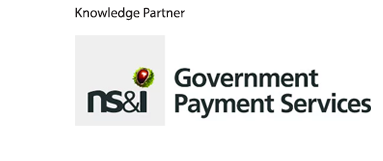Canada PM Mark Carney appoints government ‘built to deliver change’

Canadian prime minister Mark Carney has named new ministers across government with a mission “to build a stronger economy, to reduce the cost of living, and to keep our communities safe”.
Carney’s Liberal Party emerged as the biggest party in Canada’s federal election – which was held on 28 April – meaning that it will be in power for a fourth consecutive term.
Carney announced the appointment of his team of ministers yesterday.
A government announcement of the key appointments said that the cabinet was a “focused team that will act on this mandate for change with urgency and determination”.
The election campaign focused on the relationship between Canada and the United States amid US president Trump’s tariffs. The new Canadian government said it would “define a new economic and security relationship with the United States”.
It would also work to “build a new Canadian economy – one that creates higher-paying careers, raises incomes, and can withstand future shocks”, it said.
The appointments to the 28-strong cabinet include Shafqat Ali, as president of the Treasury Board, where he will be responsible for public service efficiency and lead on digital transformation.
A minister of government transformation, public works and procurement – Joël Lightbound – has also been named among the ministers. The post was previously known as minister of public services and procurement.
Other key appointments include former president of the Treasury Board Anita Anand as minister of foreign affairs, François-Philippe Champagne being named minister of finance and national revenue, and Julie Dabrusin as minister of environment and climate change.
Carney has also named a minister of artificial intelligence and digital innovation to the government for the first time, with Evan Solomon named to the role.
A full list of the cabinet ministers is available on the Canadian prime minister’s website.
Read more: Canada’s Liberal party wins election but expected to form minority government
Secretaries of state named alongside cabinet ministers
The cabinet minister posts will be supported by 10 secretaries of state, the Canadian equivalent of junior ministers.
The role of secretaries of state has been used by previous Canadian prime ministers including Justin Trudeau, Stephen Harper, Paul Martin and Jean Chrétien.
In a 2011 guide for ministers and ministers of state published when Stephen Harper was prime minister, secretaries of state were described as additional ministers “chosen by the prime minister to provide support to ministers and to the government as a whole,” but who don’t preside over departments.
This means they can help drive government collaboration, and the 10 posts confirmed by Carney are:
- Buckley Belanger, secretary of state (rural development)
- Stephen Fuhr, secretary of state (defence procurement)
- Anna Gainey, secretary of state (children and youth)
- Wayne Long, secretary of state (Canada Revenue Agency and financial institutions)
- Stephanie McLean, secretary of state (seniors)
- Nathalie Provost, secretary of state (nature)
- Ruby Sahota, secretary of state (combatting crime)
- Randeep Sarai, secretary of state (international development)
- Adam van Koeverden, secretary of state (sport)
- John Zerucelli, secretary of state (labour)
Transforming government productivity at the heart of agenda
In his victory speech, Carney said that he “chose to enter politics because I felt we needed big changes in this country, but big changes guided by strong Canadian values”.
He said he would govern for all Canadians, and wanted to “put an end to the division and anger of the past”.
Carney said Canada would “need to think big and act bigger” in the current economic uncertainty: “We will need to do things previously thought impossible at speeds we haven’t seen in generations.”
The party’s manifesto set out some plans to reform the public service. It concluded that the federal government has been spending too much, and Carney’s government would “launch a comprehensive review of government spending in order to increase the federal government’s productivity”.
This review will focus on clear targets for productivity through creating “an iterative process that deploys best approaches across the public sector”.
The party also pledged to create a dedicated Office of Digital Transformation at the centre of government with a mission to “proactively identify, implement, and scale technology solutions and eliminate duplicative and redundant red tape”.
The office will be focused on “enhance[ing] public service delivery for all Canadians and reduce barriers for businesses to operate in Canada, which will grow our economy”, and to “ensure timely, accessible, and high-quality services that meet Canadians’ needs”.
In particular, the office will centralise innovative procurement and “take a whole-of-government approach to service delivery improvement”.
AccelerateGOV – Global Government Forum’s public service transformation event – co-hosted by the Government of Canada returns on December 9th 2025. Register your interest now for the conference, which will set out how public servants can meet the new Government of Canada’s priorities.





















